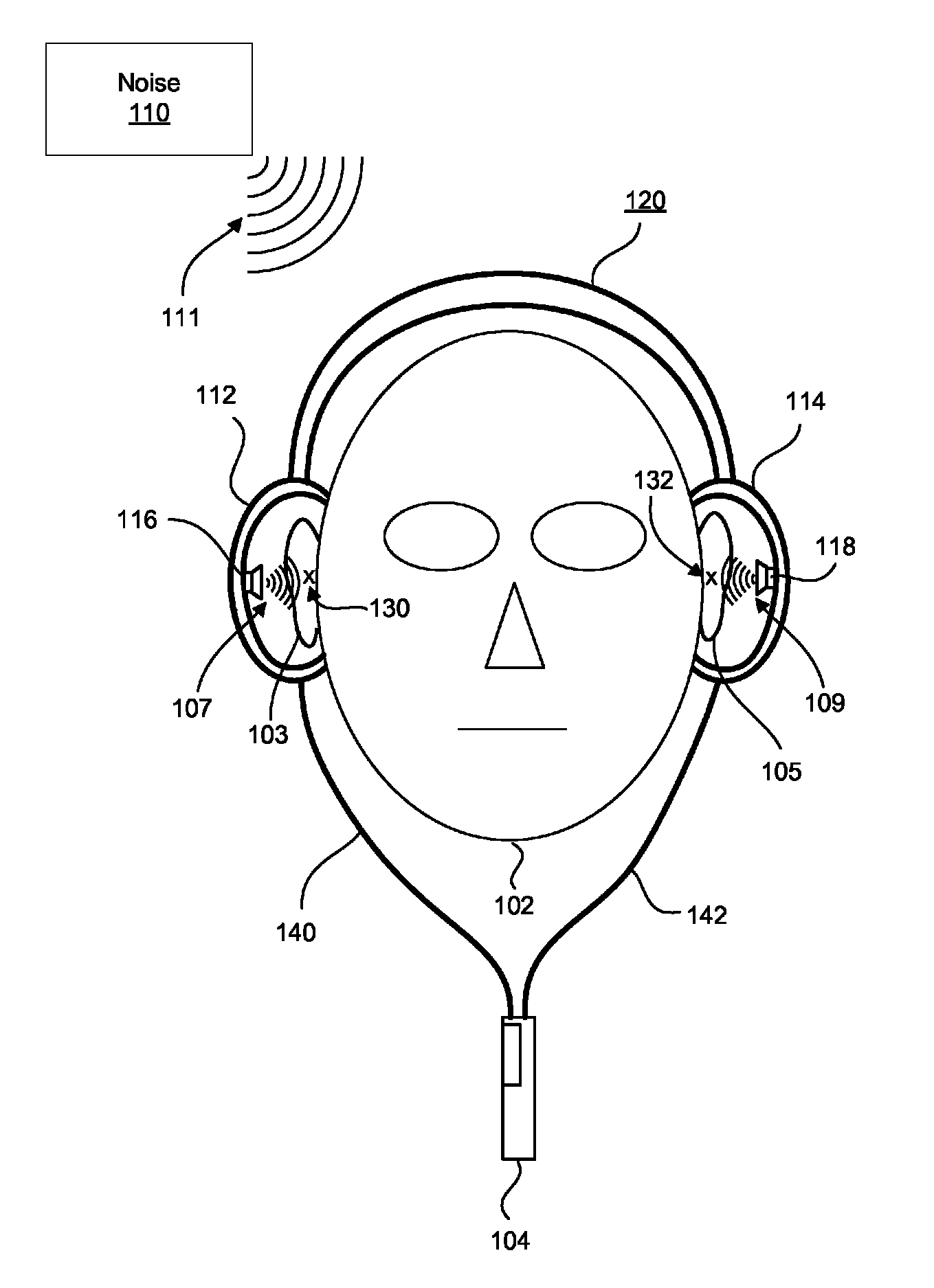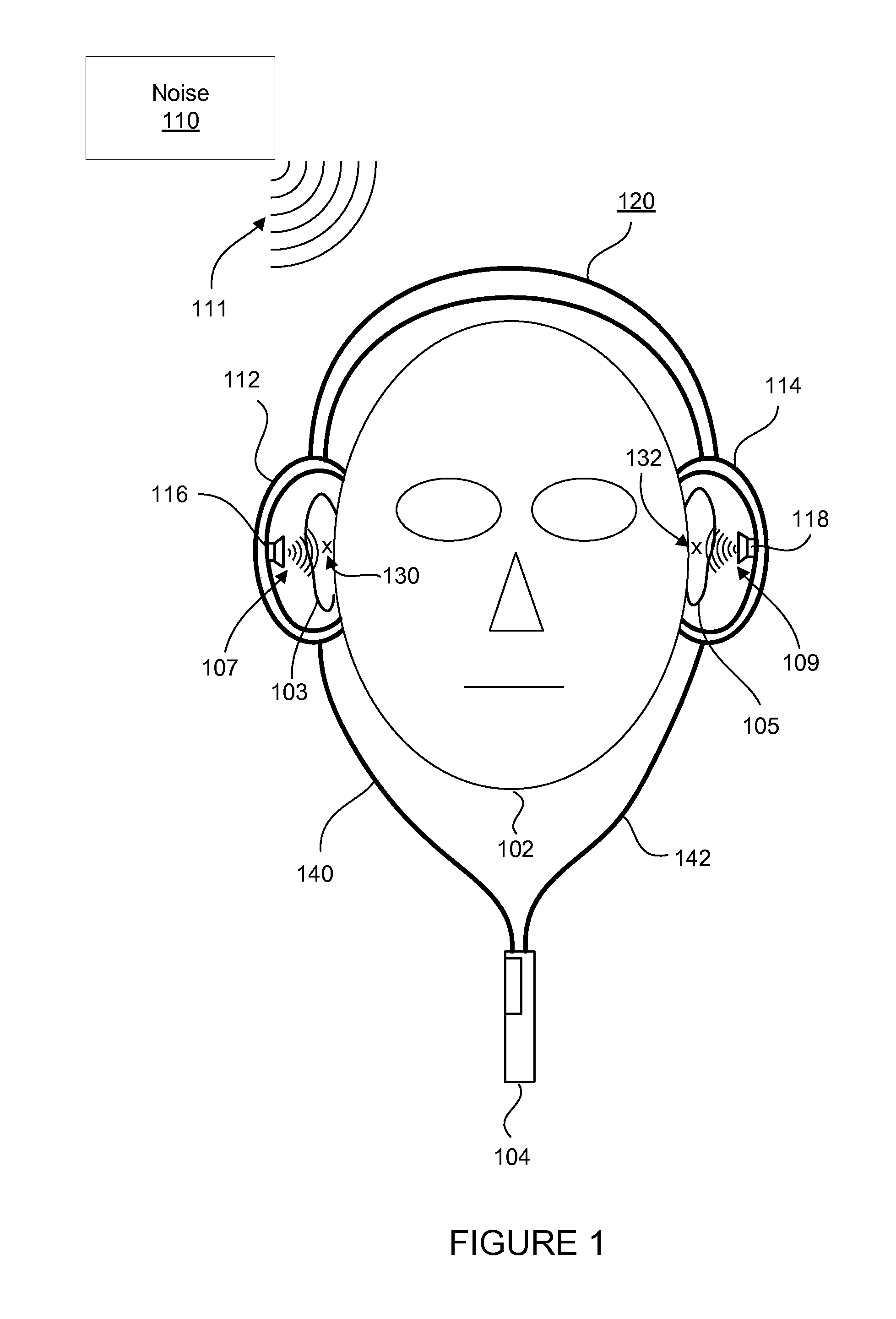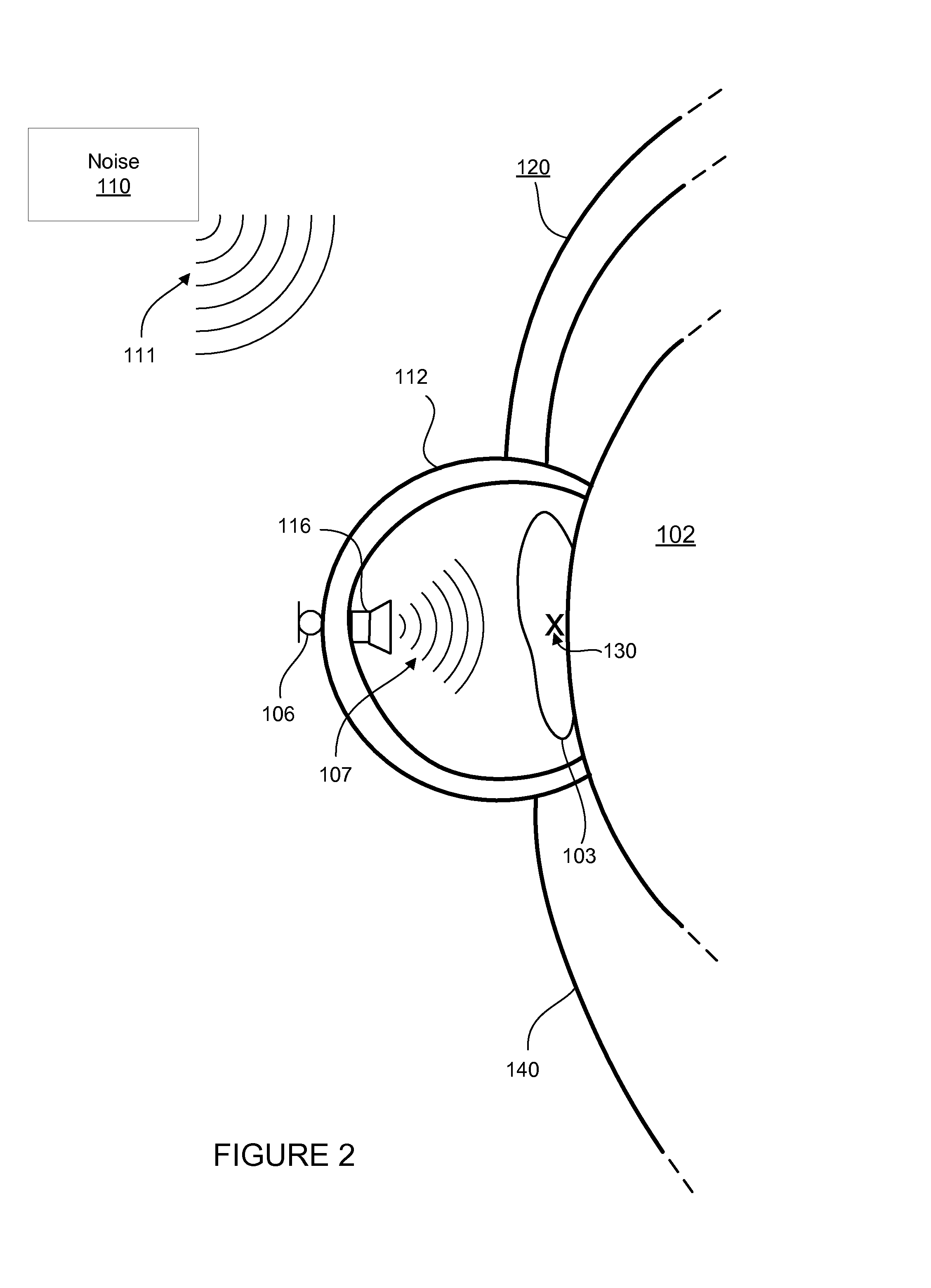Low latency active noise cancellation system
a noise cancellation and low latency technology, applied in the field of audio processing, can solve the problems of affecting the listening experience of desired sound, and affecting the noise attenuation performance, so as to achieve low latency, low latency, and high latency
- Summary
- Abstract
- Description
- Claims
- Application Information
AI Technical Summary
Benefits of technology
Problems solved by technology
Method used
Image
Examples
Embodiment Construction
[0027]Systems and methods described herein provide for low latency active noise cancellation, which alleviates the problems associated with analog filter circuitry. The present technology utilizes low latency digital signal processing techniques that overcome the high latency conventionally associated with conversion between the analog and digital domains. As a result, low latency active noise cancellation is performed utilizing digital filter circuitry, which is not subject to the inaccuracies and drift of analog filter components. In doing so, the present technology provides robust, flexible, and high quality active noise cancellation.
[0028]Embodiments of the present technology may be practiced on any earpiece-based audio device that is configured to receive and / or provide audio such as, but not limited to, cellular phones, MP3 players, phone handsets, and headsets. While some embodiments of the present technology will be described in reference to operation on a cellular phone, th...
PUM
 Login to View More
Login to View More Abstract
Description
Claims
Application Information
 Login to View More
Login to View More - R&D
- Intellectual Property
- Life Sciences
- Materials
- Tech Scout
- Unparalleled Data Quality
- Higher Quality Content
- 60% Fewer Hallucinations
Browse by: Latest US Patents, China's latest patents, Technical Efficacy Thesaurus, Application Domain, Technology Topic, Popular Technical Reports.
© 2025 PatSnap. All rights reserved.Legal|Privacy policy|Modern Slavery Act Transparency Statement|Sitemap|About US| Contact US: help@patsnap.com



